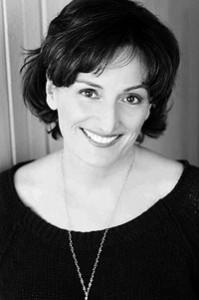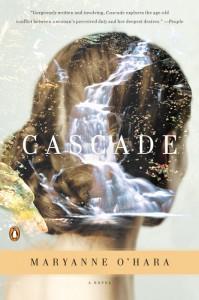 I am thrilled to welcome Maryanne O’Hara, author of recent novel Cascade to The Novel Life! In the essay below O’Hara shares how she came to write Cascade:
I am thrilled to welcome Maryanne O’Hara, author of recent novel Cascade to The Novel Life! In the essay below O’Hara shares how she came to write Cascade:
I was a reluctant novelist—Cascade developed from a few short story ideas that burst their seams. One was going to be about an artist who worked for Roosevelt’s New Deal public arts projects in the 1930s. I was interested in writing about what had then been a new idea in America: that the artist’s job was just as important as the bridge-builder’s or stonemason’s. Another story idea was inspired by the ‘drowned town’ setting that had haunted me since I was a child and first saw the Quabbin Reservoir, the vast Massachusetts water supply that covers what were once four thriving towns.These ideas came together as a novel the day I wondered: what would happen if I set an artist’s story in a similarly threatened place?
There was so much to research: the Great Depression, New York City during the New Deal era, art in Paris in the 1920s, art in New York in the 1930s, politics, reservoir construction, the build-up to World War II, theater production, Shakespeare’s First Folio. I watched hours of newsreels. I read old newspapers and magazines. When even my oldest, classically-trained artist friend wasn’t quite sure how paintings were painted in the 1930s, I hit upon the idea of reading “how to” art books published before 1935.
I wanted to write beyond 1930s stereotypes. We hear “The Great Depression” and visualize runs on banks, and people on street corners selling apples. But when I interviewed people who actually lived through those times, I consistently heard, “Oh, yes, it was a terrible time, although…it wasn’t so bad for us. My father always had a job.” As bad as twenty percent unemployment was, it did mean that eighty percent were in fact employed. I came to realize that it is uncertainty that makes hard times hard for everyone.
The most disturbing part about researching the 1930s was discovering how appallingly casual and open anti-Semitism was. I reference a Roper Poll in the book, and although I change its publication from 1938 to 1935, this poll did in fact exist.

My main character is Desdemona, an artist who is torn between doing what is expected of her and living the life she wants to live. I didn’t set out to create a flawed character, but I’ve yet to meet a human being who isn’t flawed, and Dez soon became one herself. I like to tell people that from the very beginning of writing this novel, I had a line from the great, Nobel-prize winning Irish poet, Seamus Heaney, running through my head: You lose more of yourself than you redeem/Doing the decent thing. I wanted Cascade to explore, “What is a decent choice?” and “Is a decent choice the same as a right choice?” and “Who decides what is right?”
I love the questions O’Hara proposes “Is a decent choice the same as a right choice?” ~ questions that are as relevant today as they were in Desdemona’s era. Be sure to check back Friday for my review of Cascade and in the meantime, visit O’Hara at her Postcard Blog ~ she shares vintage postcards that illustrate the Cascade story ~ truly a unique approach that reveals the underpinnings of the story. Fascinating stuff!
